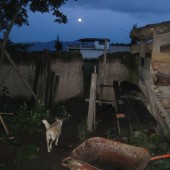
When we began down the road to making this edition of JSE, we had mapped out a route, but knew not where the journey would take us. With proofs in galley, we face V.S. Naipaul’s “Enigma of Arrival, knowing that the larger journey has only just begun. However, if a lesson has emerged from these pages (screens?), it is the power of geographic metaphor for guiding our thoughts and actions regarding sustainability. Geography, as the environmental science “par excellence” assimilates every aspect of who we are, and the spaces that we inhabit, providing a powerfully rooted blueprint for teaching and learning about sustainability. The connection between geography and sustainability is strong.
Continue Reading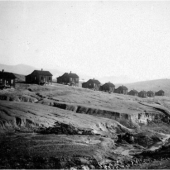
Carol Harden elegantly lays out, in broadest terms, from an environmental, cultural, social, political, economic and historical perspective, the essential confluence between geography as a discipline and sustainability as a concept. And then, in the face of the inevitability of change, she provides such a succinct metaphor for pursuing sustainability—just dance!
Carol Harden, elegantemente establece, en términos más amplios, desde una perspectiva ambiental, cultural, social, política, económica e histórica, la confluencia esencial entre la geografía como una disciplina y la sostenibilidad como un concepto. Y luego, en la faz de la inevitabilidad del cambio, ella ofrece una metáfora concisa para la persecucion de la sostenibilidad –Solo Baila!
Continue Reading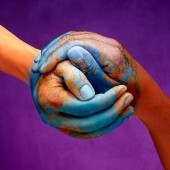
In a very cohesive and convincing argument, Randall Amster asks us to look at the other side of the well-worn coin that links environmental degradation and resource despoliation to conflict and war. Instead, argues Amster, conflict zones have been shown to be appropriate sites for the creation of peace parks and other similar initiatives, where they can be turned into regions of enhanced sustainability—in every sense of the word, including environmental, social, and economic.
Continue Reading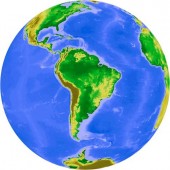
Two intellectual powerhouses from South America, Gudynas and Acosta make the case for a new way of understanding human fulfillment, authentically Latin American in origin with indigenous roots—the idea of el Buen Vivir. We cannot translate their ideas “the good life” or “quality of life,” both thoroughly Western concepts, and we must hope that el Buen Vivir, with its entire notion of well living, fulfillment and plenitude in connection with other humans and the elements of the landscape becomes incorporated into a healthy and sustainable idea that replaces development. Gudynas and Acosta make the case that these ideas are emerging from their indigenous roots and have been a big part of the political, social and economic success of the “new left,” as evidenced by their foundational role in the constitutions of Bolivia and Ecuador.
Continue Reading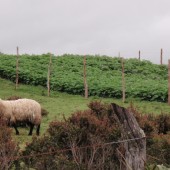
In this interesting comparison of sustainability in very different geographic and cultural settings—Long Island, New York versus the Chiloé archipelago, Chile—Vercoe and Brinkmann suggest that the societal framework for sustainability requires very different educational efforts. Their in-depth analysis of how these societal frameworks are almost diametrically opposed opens us to understanding how important geography is to the way we formulate our educational goals and systems.
Continue Reading
Jenny Finn reminds us that we all carry a full geography of internal landscapes, embodied in the simple act of breathing. As we consider the deep and complex issues that entering learning about sustainability in the outer world, is it not essential, she asks, that we connect, profoundly through each breath we take, with those internal landscapes?
Continue Reading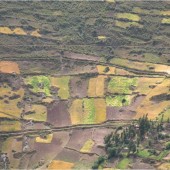
In this comprehensive review, Kenneth Young gives a robust and sweeping analysis of how global climate change might affect landscapes in the global South. His unique emphasis on including the human element, within both a current societal and historical-political framework—provides a hefty morsal of food for thought regarding the multiple and complex ways in which real cultural and natural landccapes will respond to global warming.
Continue Reading
In this deeply cohesive and fundamentally geographic argument, Helena Norberg-Hodge brings an impressive array of sustainability issues under a single guiding rubric for educating and changing society—the need for a shift from globalised systems to local practice. While every point in her argument is backed with interesting details—including her fascinating experiences with the Himalayan Ladakhi people—she is consistent in bringing us back to valuing localisation and yet measured in her prescription which calls for gradual shifts, not radical and potentially harmful jumps, towards localisation.
Continue Reading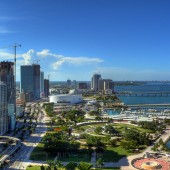
Reza Banai makes a strong case for urban sustainability as the perfect area of practice to apply a broad range of effective pedagogies. The complex multi-disciplinary nature of urban design means that it requires advanced, high-level, analytical, holistic, hands-on pedagogies to bring about real solutions for sustainability. With urban popuplations booming worldwide, chances to apply Banai’s nexus between urban sustainability and a robust education abound.
Continue Reading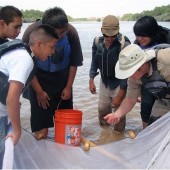
Maceo Carrillo Martinet calls for bringing the local geography of sustainability into STEM (Science, Technology, Engineering, Math) curricula, all the while framing this call in the global context of climate change. He makes a convincing case, based on the experiences of the Instituto Querencia in New Mexico, for using three principals to guide STEM curricula: students as agents of change; diverse cultural perspectives enrich the curriculum; and involve the local community—wherever you might be—in the curriculum.
Continue Reading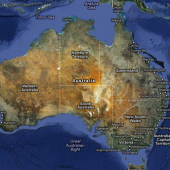
In this report from “down under,” Linda Zibell recounts the triumph of eco-centric language over a techno-centric approach to bringing sustainability into the Australian school curriculum. She brings deep insight into deconstructing the power of word choice and language patterns with real examples of how school-age kids might perceive and understand the words we use.
Continue Reading
The problems we are facing are linked.
It is not a set of problems.
It is a system of problems.
Now it is time to look at the system of solutions.
— Janine Benyus, Nobel Laureate Symposium, 2011.

In Learning Gardens and Sustainability Education: Bringing Life to Schools and Schools to Life, Williams and Brown (2011) place living soil at the center of the discourse on sustainability education. One of the seven principles that guides their pedagogy of learning gardens is: valuing biocultural diversity. This photo-essay of elementary students in K-8 schools, explores how 4 inches of soil in the learning gardens can teach about life’s diversity. The author urges humble attentiveness to that which is below our feet seemingly hidden and unnoticed yet teeming with life.
Continue Reading
The push toward sustainability & “greening” in organizations is evident in the Federal government as well as within the private sector. A more specific focus on “greening” information technology (IT) and information systems (IS) can also be seen. As might be expected, a corresponding increase in green jobs is also occurring with many of those jobs focused on IT. The trouble with filling green jobs, IT or otherwise, is finding educated and qualified workers to fill them. As a result, there is a growing demand for green computing education. As early research has indicated, however, the demand for green computing knowledge by those in industry is only slowly making its way to the academic world. A recent study by Sendall (2010) identified a surprising “lack” of green IT/IS/computing and/or sustainability curriculum initiatives in institutions of higher education. With this knowledge as background, this research efforts attempts to identify, even so: Where can green computing education and/or training be found today?
Continue Reading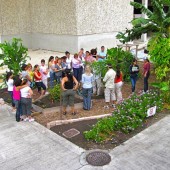
In this fascinating case study from Miami Dade College, Anouchka provides us with a detailed and subtle look at the effects of a simple school garden on her students. The garden’s potential to build a sense of community and place as well as a new environmental ethic is developed through vivid vignettes woven throughout the description of how Anouchka and her colleagues launched the project. The garden project described is a powerful example of complex, interdisciplinary teaching that also takes advantage of the college’s physical campus to foster experiential learning and cultural exchange. Whether or not readers are involved in similar projects, this story is important for its illustration of the interconnectivity and endless learning possible in any discipline from a connection to the living earth.
Continue Reading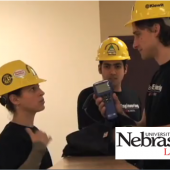
As we continue into the future, if we hope to move in the direction of sustainability, the question of energy efficiency in buildings old and new becomes increasingly relevant and key to success. Read this article by Dr. Terri Norton and Matija Ratovic to learn about efforts I the Midwest to prepare university students to take on this task.
Continue ReadingThis case study presents the threat that newly formed glacial lakes pose for mountain dwellers as well as infrastructure down valley. The article discusses efforts under way in Apolobamba National Park to include glacial lakes in their “social monitoring” system in order to include the local population in defining management options for potentially dangerous glacial lakes.
Continue Reading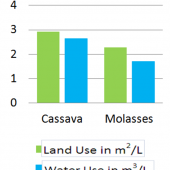
: Thailand is facing a serious problem with their reliance on foreign oil imports. With nearly 90% of their crude oil, gasoline, and diesel being imported, the country is searching for ways to improve their national energy security by lowering their demand for foreign oil. Bioethanol from cassava and molasses are two promising technologies that could help Thailand work toward their goal of energy security. However, debate is still on going to determine which feedstock should be chosen to power the country’s bioethanol industry. This teaching case study presents the background and sustainability analysis for both cassava and molasses based bioethanol as well as teaching notes and discussion questions. It is intended for high school seniors or college undergraduates in courses that address sustainability-related issues and technologies.
Continue Reading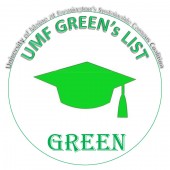
There is much discussion in sustainability education about the urgent need for a wholesale paradigm shift and much debate about the role of incremental, grassroots change in societal transformation. Eason and Heroux describe a creative and pragmatic project that addresses behavior change through an incremental approach. Their case study provides a provocative example of how a grassroots effort to change energy consumption can have growing implications for campuses’ climate impact through the viral nature of student culture. Their “Green’s List” is a fine and replicable model for the role of celebration in community transformation.
Continue Reading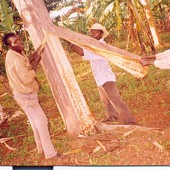
Decent life depends on nature’s provision of stable resources. In this report I explore cultural efforts embedded within nature preservation and environmental education among the indigenous Baganda and how these can be emulated to inform modern environment conservation programmes. Accordingly, environmental conservation in Buganda was guided by clearly streamlined gender roles and cultural values through spirituality and the clan system which defined the ethical relationships between human culture and the environment. The key challenges towards this include gender inequality and the associated stereotypes, the political climate in the country, and modern religions. Successful mitigations should essentially hinge on integrating indigenous conservation methods in formal school curriculum as well as undertaking sensitization and empowerment campaigns geared towards nature preservation.
Continue Reading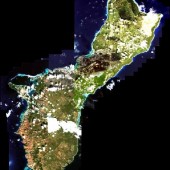
Graduate students enrolled in an education research course (many of the students were school teachers) that the author taught during the spring 2010 semester participated in this “green” course project. Those students who were not school teachers, who worked for private companies or government agencies, focused their projects on green communities, workplaces, or households. Students conducted their projects based on inquiry-based learning, and this sustainability study reported in the current paper itself derives from an inquiry-based approach. The results from this study demonstrated that daily curricular activities at universities and schools provide an important way to support environmentally responsible living. Implementing green course projects similar to the one described here is one of many ways in which university teachers can incorporate “sustainability” into their curricula.
Continue Reading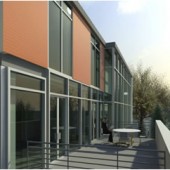
In a world of changing climate and environmental degradation, architects play a key role in the pursuit of sustainability. In this article, Karen Kensek offers digital tools that will provide up and coming architects with the necessary skills and knowledge to produce sustainable building designs.
Continue Reading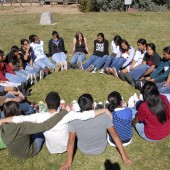
Environmental sustainability cannot be separated from social justice. Christina Selby presents a compelling case study of sustainability work grounded in cultural democracy, or processes that involve all groups in community decision-making. In the Youth Allies for Sustainability Leadership Program, young residents of Santa Fe, New Mexico, address ecological integrity through intercultural healing, relationship-building, and advocacy. Selby grounds her case in the broader theoretical work of eco-justice and transformative education. She highlights the urgent need to further integrate the defense of cultural integrity with the protection and restoration of ecological balance and economic vitality. This case study is a shining model for such integration.
Continue Reading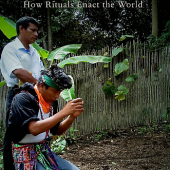
In this deep review of Frederique Apffel-Marglin’s Subversive Spiritualties, Pramod Prajuli takes us to the bio-cultural landscapes in the heart of the high Andes and Amazon of Peru where he so elegantly explains, based on the book, how the true understanding, and regeneration, of this landscape requires acceptance of a profoundly different, non-technical, non-reductionist, and non-“Western” mindset. The esay illustrates residue of enchanted bio-cultural patrimony, as it still survives and thrives in the Peruvian highlands as well as in the High Amazon. The core message of the book is to show that this patrimony is not a one-way street where the humans enact on nature but rather a two-way street where nature also enacts upon members of human species.
Continue Reading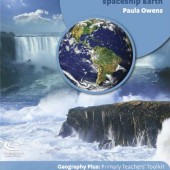
In this succinct and informative review, Shelby Gull Laird provides a good overview and solid recommendation for the comprehensive package of sustainability education K-12 curricular materials about geography—from a local to a global level—available from the UK Geography Association.
Continue Reading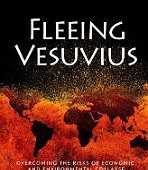
In this concise and useful review, Tina Evans brings forth the high points of Douthwaite and Fallon’s comprehensive book about economic collapse, especially featuring those aspects of the book that might contribute to courses on sustainability and peak oil.
Continue Reading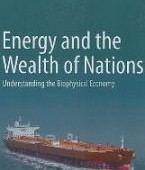
In this insightful review, Tina Evans makes the case for Hall and Klitgaards’ work as going beyond more superficial ecological economic analysis into a deeper realm of biophysical economics where human economies do not just depend on a natural resource base, but are part of it. She is impressed by how thoroughly the book delves into the many theoretical and interdisciplinary aspects of biophysical economics, while engaging the reader and presenting a coherent common theme throughout.
Continue Reading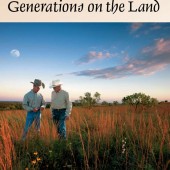
Richard Pritzlaff gives us a good idea what to expect, and not expect, from Nick Patoski’s book. This is not a grand theoretical or comprehensive work on land use or conservation, but, as Pritzlaff explains, stories from real families about their experiences of restoring land, especially grazing land. Pritzlaff gives us enough of a taste to sense the morsels that are here and to let us know how our plate will be filled by reading the whole book.
Continue Reading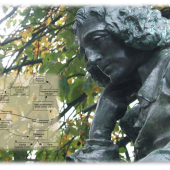
Abstract: By its nature and scope, the concept of sustainability is a challenge to traditional education. Where most academic institutions still value and promote narrowly conceived fields of expertise, sustainability requires a comprehensive, wide-angle approach to problem definitions as well as solutions. This challenge highlights the need for a bold reassessment of a number of epistemic assumptions; one of them being the validity of the Baconian-Cartesian reductionism at the core of the scientific method. This paper presents a novel, non-reductionist approach to understanding and teaching sustainability grounded in an analogy from the systems philosophy of Baruch Spinoza (1632-1677). This approach is an alternative that transcends the traditional dichotomy between reductionism and holism in their various forms. I discuss how Spinoza’s approach to parts and wholes can be applied to a transdisciplinary, systems-based sustainability education addressing systems of varying size and complexity. A multitude of systems theories and methodologies have failed in the role as widely accepted and used meta-languages that effectively transcend disciplinary confines. As applied in this paper, Spinoza’s philosophy can effectively be used as such a discipline-transcending facilitator of understanding. To my knowledge, Spinoza’s fundamental contributions to the philosophy of systems and transdisciplinarity presented in this paper have not been recognized in the literature, including the research on Soft Systems Methodology and other “constructivist” systems approaches.
Continue Reading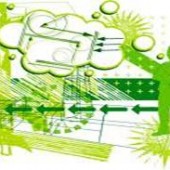
A systems theory approach to sustainability in five contexts—social/cultural, economic, environmental, technical, and individual—is a realistic and useful approach to researching and teaching sustainability in the university. As a springboard for social change, the university needs to develop values-based sustainability content for classes across disciplines, and especially address the careful assessment and evaluation of both human and technical factors for solving sustainability problems.
Continue ReadingAs institutions of higher education continue to embrace sustainability as a guiding principle, administrators, campus sustainability leaders, and researchers in the field struggle to present a holistic picture of the changes necessary for complete organizational change. While resources available for decision-makers typically focus on individual case studies on specific concepts, few have worked to address the field as a whole. This paper aims to address sustainability within the frames conceived by Bolman and Deal in their seminal work Reframing Organizations (2008). Specifically, it looks at reframing organizational change within the structural, human resource, political, and symbolic frames, as well as adapting Kotter’s Change Stages to address how sustainability can, and should, transform colleges and universities, while providing the tools necessary for sustainability professionals to enact this innovation.
Continue Reading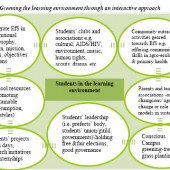
Embedding education for sustainability, in Faith Based Organisations’ (FBOs) school curricula in Uganda, puzzles. Any progressive education system should be dynamic-always calling for timely transformations in content, instructional methodologies, imparted values,
skills and attitudes, to remain holistic. Once these are adequately embraced, the system tends to remain vibrant and relevant to the institutions, the learner and the community. However, in Uganda especially in education institutions of FBOs, Education for
Sustainability (EfS) – a universally conceived aspect of holistic learning seems not to be whole-heartedly attended to either by omission or unawareness. Problems centre mainly on ideological and operational premises. These include lack of awareness, lack of goodwill of
key stakeholders to plan for and manage EfS and lack of competent teachers in EfS aspects. Answers to these problems in essence center on the theoretical underpinning of this report-curricular transformation. Secondly, proper capacity building, integrative planning,
financing and management to enable sustainable programme growth and development should also be enhanced.
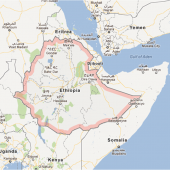
Partnerships between universities have the tantalizing possibility of providing fresh pathways to more sustainable societies. Institutions in sub-Saharan Africa are new players in this emerging development paradigm, but arguably are most in need of building capacity to address fragile and dynamic environmental and social conditions after decades of underinvestment in higher education. This paper documents the early stages of an Ethiopia-United States partnership to build capacity in institutions of higher education in Ethiopia in the critical area of sustainable water resource management that was funded by the United States Agency for International Development (USAID) and Higher Education for Development (HED). We explain how the concept of sustainability was interwoven with theories about learning organizations, supplemented by in-depth dialogue with stakeholders to assess existing capacity and future needs, and used to inform a strategic plan. The literature highlighted the need for a learning organization: a place where people continuously expand their ability to generate the results they truly desire, where innovative and expansive patterns of thinking are nurtured, where collective aspiration is set free, and where people are continually learning how to learn together. In 2011, the partnership established the Ethiopian Institute for Water Resources (EIWR) with the vision that it will become a key innovator in sustainable water resources management in Ethiopia by integrating education, research, outreach and training. One important observation so far is that in order to create a more substantive engagement than was realized in the “technology transfer” policies that shaped past North-South relationships, partnerships need to be authentic and characterized by open dialogue, mutual respect, and shared learning. Another is that the opportunities for fieldwork in Ethiopia’s complex social and physical landscapes also have enormous potential to create deep and learning experiences for other students of sustainability, thereby building capacity not just in Ethiopia but across multiple geographies.
Continue Reading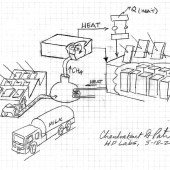
Teaching sustainability invariably involves teaching about energy – its use, its sources, its
environmental impacts, and its social implications. This paper explores how one renewable
energy alternative – biogas – is adapted and applied across scale and culture. Biogas is made by
capturing the methane released during anaerobic digestion of organic matter such as manure,
sewage, and food waste. In Nepal, biogas is a household scale technology used to create a
cooking fuel that replaces firewood and improves both environmental and human health. In the
United States, biogas is used as part of large-scale waste management systems for livestock,
wastewater treatment, and landfills to create electricity for on-site use and for sale into electric
grids. In Sweden, biogas is used as part of a regional effort to reduce greenhouse gas emissions
and fossil fuel usage by using locally generated biogas for district heating, electricity, and
vehicular fuel. By comparing these three cases, we gain insight into how one technology is
adapted across diverse needs and from household to regional scales in the pursuit of more
sustainable energy practices. Such an exercise can be an asset in the classroom to teach students
about the importance and relevance of place-based solutions that address diverse cultural and
economic realities.
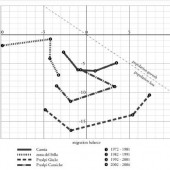
Abstract:
Amenity migration involves people moving to perceived desirable regions, usually for non-economic reasons, such as a physical or cultural environment that is seen as more beautiful, tranquil or inspirational than their current, usually urban environment. the Italian Alps and Chilean Andes have recently experienced significant amenity in-migration after decades of net population decline. Whereas amenity migration in other parts of the Alps, and the Americas is well-studied, here we represent some of the first demographic data, and also cultural-geographic analysis, comparing these two regions. In many respects, the two regions are similar, including the socio-economic situation of existing population and the principal reasons that amenity migrants arrive. IN both regions, perceived beauty and tranquility of the natural mountains environment is the main attraction for amenioty migrants. In addition, migrants come to experience a different cultural milieu that thy perceive as less stressful than the usually urban environments that they emigrate from. In the Italian Alps, close proximity to urban areas bring more day migrants, and the longer cultural history of teh region has led to more conflicts of values between amenity migrants and long-term residents than is seen in the relatively culturally young Chilean Andes.
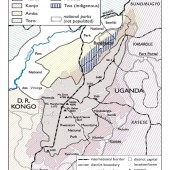
Alpine tourism in the attractive, glaciated highlands of Eastern Africa’s national parks has traditionally been considered an engine of regional development. The major question this article examines is the significance of this economic sector and whether it can contribute to sustainable regional development. The research area is Mt. Kenya and the Ugandan Rwenzori; the detailed studies were conducted in the most intensively visited tourist areas, i.e. at the foothills of the two massifs: in the Mobuku Valley in the eastern Rwenzori, and at Naro Moru west of Mt. Kenya. In addition to analyses of the current state of the art as well as of official statistical data, our conclusions are derived from own surveys, mapping activities and household observations.
The results show that economic benefits from mountaineering tourism in the Mt. Kenya region are fewer than commonly calculated, mainly because of the low occurrence of tourism. Moreover, existing incomes are low, inconsistent and distributed unevenly. There are clear parallels to the critical structures characterizing the Rwenzori mountains in Uganda: alpine tourism does not reduce regional income disparities and largely fails to promote sustainable development. Nevertheless, community-based tourism, as shown by the example of the Rwenzori Mountaineering Services (RMS) in the Rwenzori National Park and of the Guides & Porters Safari Club (GPSC) in the Mount Kenya National Park, stabilizes the livelihood of rural households and reduces the vulnerability of families. Whereas in the Mt. Kenya area, most of the regional households are involved, in the Rwenzori mountains the favorable effects of alpine tourism are concentrated in just one valley (and support only one twelfth of the entire Rwenzori population). Thus, its contribution to sustainable regional development is negligible.
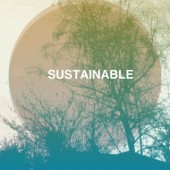
A study was conducted using a modified participative goal setting approach to create a behavior change over the course of a semester. Two approaches to goal setting were used. Student subjects set goals regarding switching from one-time use plastic or paper bags to reusable bags when grocery shopping. They monitored their behavior on a weekly basis. We hypothesized that the participants would report: 1) an increase in the degree to which they used reusable bags on shopping trips, 2) being more committed to acting in an environmentally-responsible manner, 3) voluntarily adopting additional sustainability-related behaviors that are not required as part of the exercise, and 4) attempting to affect sustainability-related behavior in others. Additionally, the following research question was posed: Would any behavior change be accompanied by changes in attitudes towards sustainability? Results indicated that goal setting was effective in increasing the reported frequency of using reusable bags when shopping, though there was not significant change in attitudes. A more simplified approach was almost as effective as a more complex. If our results can be generalized, they suggest that managers can use a simplified goal setting technique to increase the frequency with which employees engage in sustainable behavior. Further, a change in attitude may not be necessary for this effect to occur.
Continue Reading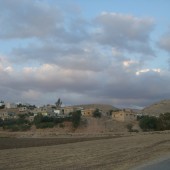
Sustainability education for adult learners implicitly and explicitly forms an important component of participatory sustainable community development programs that have become commonplace as part of international development practice. Community-based sustainability education programs for adults vary in their focus on content and process. Defining learning as making meaning that leads to action, we use a critical learning cycle model to analyze learning processes in two water conservation programs in Jordan, one of the world’s most water scarce countries, where sustainability education is an important part of the national water management strategy. In this model, which incorporates inspirational learning and experience-based learning, learners integrate insight and experience to create meaning and to take action. We present the findings from detailed case studies of the two programs, one of which takes a content-oriented approach to sustainability education and the other a more process-oriented approach. We used qualitative research methods including ethnographic observations and in-depth interviews with program managers and participants that we analyzed through emergent thematic coding and validated with member-checking and peer review. We observe that the process-focused program was more successful in fostering individual-, household-, and community-level change than the content-focused approach. We conclude with recommendations to develop community capacity to address complex environmental challenges including process-oriented approaches that incorporate internal learning processes and multiple cycles of experience-based experimentation. In these approaches, learners are able to apply what they have learned and test ideas as they develop a more thorough understanding of the problems at hand and their potential solutions while engaging in culturally appropriate forms of expressive self-reflection to make new ideas meaningful.
Continue ReadingThe purpose of this study was to determine systems thinking skill development among undergraduate students and assess the effectiveness of two different instructional methods for increasing these skills. Undergraduate students from two four-year state institutions, one located in the Midwestern region (n=20) of the United States and one in the Southwestern region (n=16) participated in the study. To accomplish the research object, the study employed a mixed between-within subjects experiment. Employing two different systems thinking teaching interventions, one group of students was exposed to a one-time intervention while the other group was exposed to a more extended and holistic intervention. Data were collected at two points in time: pre- and post-intervention. At the beginning (pre-intervention) and end (post-intervention) of one semester, students read case studies describing apparel firms’ sustainability efforts. The students were then tasked to identify sustainability challenges, analyze conflicts between challenges, and offer business recommendations. Using a rubric, the authors scored the students’ responses on a scale of 0 to 5 and assessed ability to 1) think holistically and 2) perceive interrelationships and resolve resulting conflicts. T-tests revealed that prior to the teaching interventions, as a whole, the students had unsophisticated skills related to their ability to think in systems. ANOVA revealed that, through instructional methods focused on systems thinking, it is possible to increase students’ ability to think in systems. Additionally, the study revealed that, compared to a constrained one-time intervention, a long-term, holistic, and integrated approach is significantly more effective in encouraging students’ system thinking competencies. Results of this study support the need for educators to integrate teaching methods designed to increase students’ systems thinking competencies holistically throughout course curriculum. Additionally, the study outlines a transferrable approach to assessing systems thinking skills within postsecondary education.
Continue Reading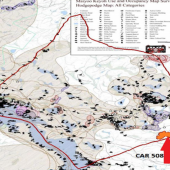
Effective bases of environmental decision-making build upon multiple and divergent understandings of landscapes and landscape connection. This paper develops ‘ethnogeomorphology’ as a tool for developing a shared (if contested) landscape platform for sharing worldviews and perspectives. Interfaces of intercultural communication, particularly with many Indigenous knowledges, are spaces of crucial juncture in understanding challenges of environmental and social sustainability and their relevance extends far beyond only ‘Indigenous studies’. Methodologies that aim to empower many Indigenous communities in documenting their knowledges can fail when attempting to communicate them in terms of conventional cause-and-effect science based on assumptions of linear and static spatial perspectives. This paper documents one such failure in practice with the Maiyoo Keyoh in Canada, and draws upon research conducted with the Yorta Yorta Nation (south-eastern Australia), the Stò:lō Nation (British Columbia, Canada), the Maiyoo Keyoh (northern British Columbia) and the Tia Kina Te Taiao (in New Zealand), from 2007-2011. Emerging insights in geography offer critical insight in addressing some of these challenges in practical ways, as increasing unrest in ‘physical’ disciplines (such as geomorphology), contest traditional binaries between ‘physical’ and ‘human’. This paper argues that geomorphic landscapes themselves are good learning tools that illustrate dynamic time-spaces. Recent developments around concepts of emergence, contingency and complexity, addressed through system-specific applications, point to reengagement with ‘place’. Similarly, conceptual developments in human geography see concepts of “scale as relation” rather than ‘scale as level’, also offers synergistic perspectives with physical geography founded on seeing multiple scales simultaneously. This solid grounding of coherence in geography could contribute to a practical and grounded basis of sustainability. Rather than being limited to theoretical debates, this paper illustrates the potential of a hybrid geography in practice. This convergence/hybridity in perspectives is not a conflation of knowledges, but an opportunity for situating worldviews in dialogue, assisting efforts to decolonize intercultural communication and promote ethical engagement in practice. This ‘ethnogeomorphic’ perspective offers a reconsideration of the term ‘adaptive’ in ‘adaptive management’, framed around multiple connections to landscapes, rather than as a tool restricted to Western science.
Continue Reading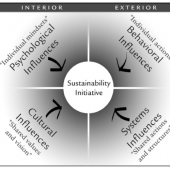
Given the importance of understanding and learning to work effectively with a diversity of perspectives and values in the sustainability field, this article offers a developmental map of the worldviews of sustainability. It includes an introduction to developmental theory and research, an overview of the diversity of worldviews, how they differ and relate to one another and to sustainability practice and leadership, and how these worldviews develop over time. A developmental perspective suggests that every sustainability practitioner/educator/leader has a worldview that is made up of the beliefs that person holds and their definition for sustainability emerges out of those beliefs. Moreover, there are consistent patterns observed cross-culturally in the ways that these worldviews develop. Understanding and learning to work with the diversity of perspectives and their developmental trajectory is vitally important for sustainability education and leadership in that it helps us to design curriculum, and sustainability campaigns, policy and actions in ways that are more holistic, include a diversity of worldviews, address conflict between them and contribute to the development of the worldviews themselves.
Continue Reading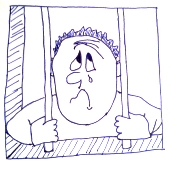
Malcolm Brooks, as with all good lol humor, helps us look in the mirror, recognize where we come from, and not take it all so seriously.
Continue Reading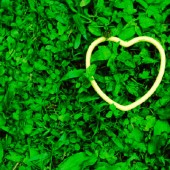
The Journal of Sustainability Education (JSE) Sustainability-Now-And-Powerful: “SNAP” Awards In March 2012, the Journal of Sustainability Education opens nominations for the Sustainability-Now –And-Powerful (“SNAP”) Awards. You can submit a brief nomination or self-nomination for the award in one of three categories: Restore, Recharge, and Replenish. Each winner will receive $100 towards her/his project and a hand-calligraphed certificate […]
Continue Reading